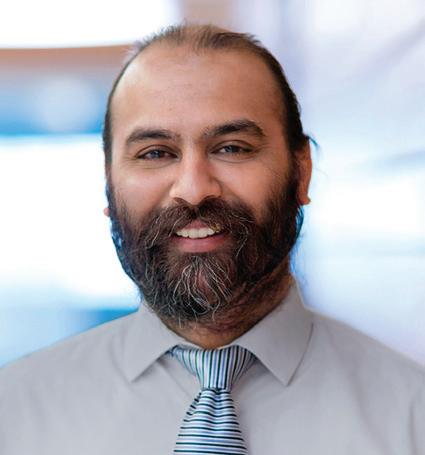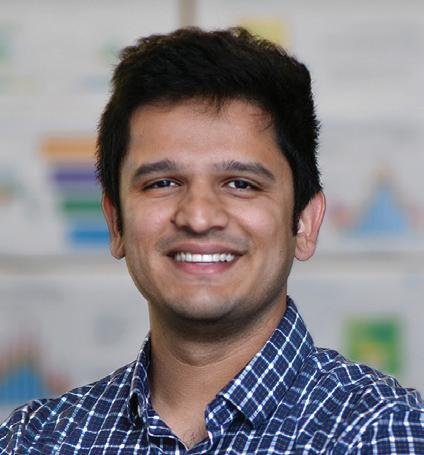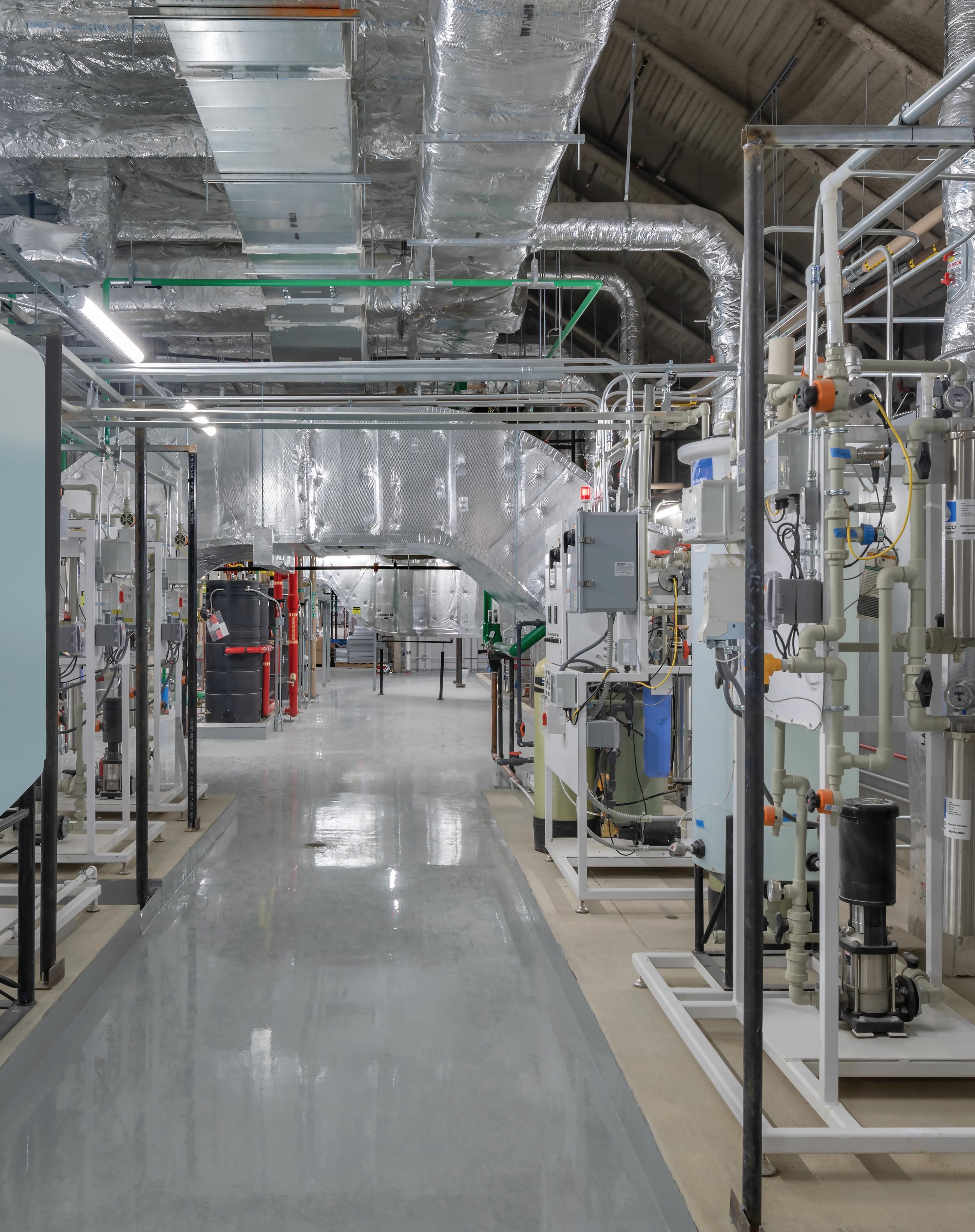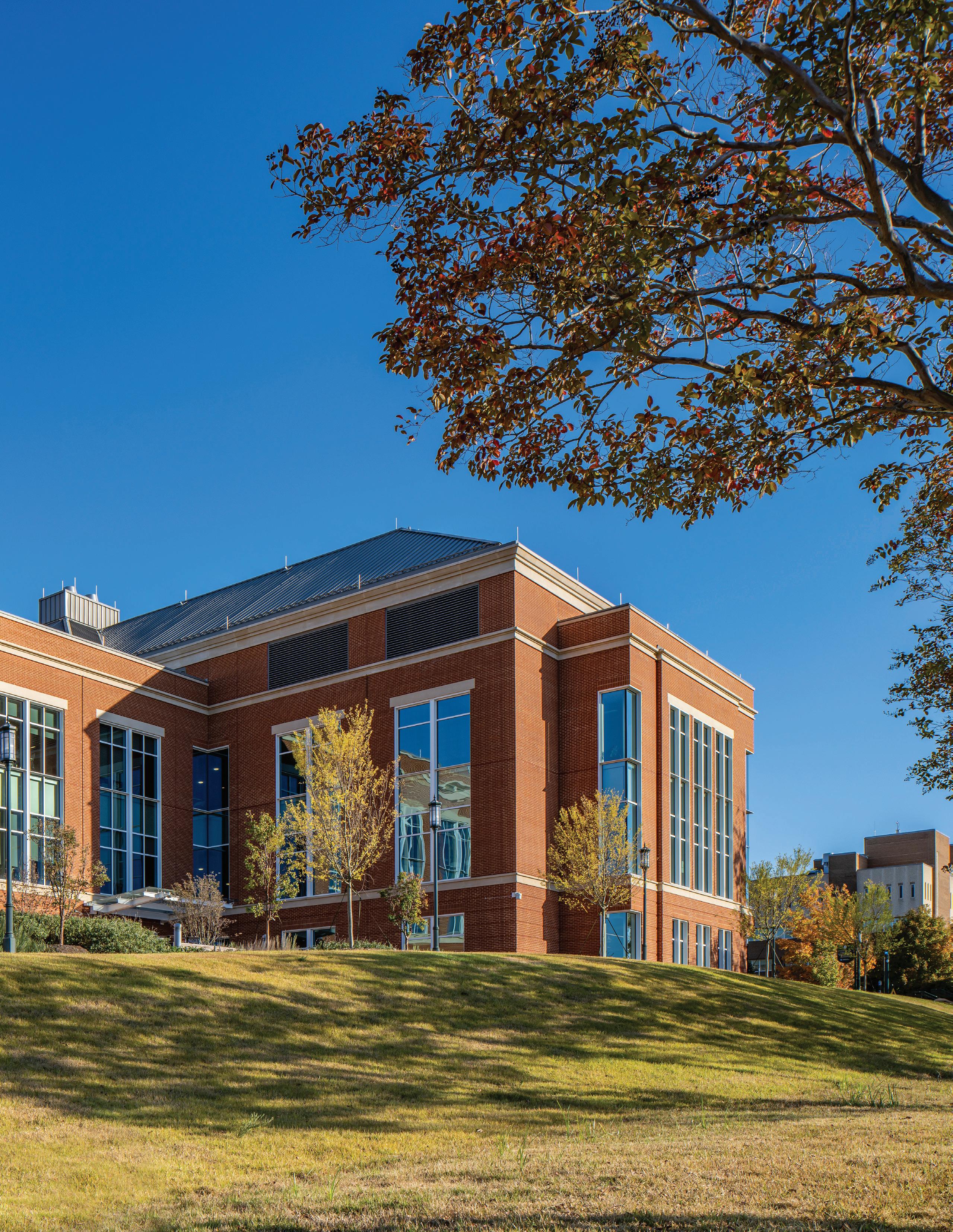













At Clark Nexsen, we believe our industry must achieve net zero embodied carbon in all structures by 2050. Our structural engineers are committed to reducing embodied carbon in current and future projects through the SE 2050 Challenge and the firm's goals for Integrated Design. We are taking the steps now to understand and engage our staff and clients in designing structures with very low and zero carbon impact. By prioritizing sustainability, we aim to build a better future for our environment and future generations. Clark Nexsen recognizes that achieving the goal of projects to be 100% clean, both operational and embodied carbon must be 0%.

The group of structural engineers who developed this action plan will lead efforts to educate our colleagues, clients, and partners on reducing embodied carbon. In addition to firmwide presentations on the SE 2050 Challenge and embodied carbon, we will continue to notify our staff of helpful webinars, published articles, and other software tools.
Our Embodied Carbon Reduction Champion is Bethany Whitehurst, PE, SE, Senior Structural Engineer in our Charlotte, NC office. With over 20 years of experience practicing structural engineering, Bethany has been a licensed professional engineer since 2009. Responsible for facilitating regular meetings of the SE 2050 team and interfacing with our sustainable design professionals, the champion coordinates the annual submission of embodied carbon data to SE 2050.
Our SE 2050 team promoted and attended webinars and educational events related to embodied carbon reduction. These opportunities were publicized to all structural engineers in our firm.
We are developing digital resources and reference areas for our engineers. The work of the SE 2050 group, our LCA documents, and SE 2050 program details are all available across the firm. We are working to consolidate and streamline access and coordinate information with our Sustainable Design team, to provide a central location that is easily accessible throughout Clark Nexsen.
This is recognized as an ongoing process that requires structural engineers to continually update their abilities and skills in sustainable software engineering practices. To support this effort, we aim to provide education and resources to Clark Nexsen structural engineers who are not part of the internal SE 2050 team. This includes offering information during our monthly department meetings on sustainability, sharing the latest trends and best practices in carbon reduction, and providing easily accessible resources that promote sustainability in structural engineering. By continuing to invest in knowledge sharing, we can build a community of experts who can work collaboratively to address the complex challenges associated with sustainability.
As part of our commitment to advancing sustainable engineering practices, we are planning to mentor another structural engineering firm and educate them on the SE 2050 Challenge. Our goal is to help them understand the importance of reducing embodied carbon in building structures and provide guidance on how to achieve this by the year 2050. By sharing our knowledge, we hope to inspire other firms to join us in this important mission and accelerate progress towards a more sustainable future. Through this mentoring and education, we aim to build a stronger community of structural engineers who are equipped to tackle the challenges of sustainable engineering.
As an organization, we strive to keep our clients informed about the latest developments in sustainable engineering practices. For example, we provide information such as the annual Integrated Design Report that explains the principles and benefits of SE 2050 and sustainability commitments of other disciplines. These materials will help our clients understand how they can adopt sustainable engineering practices and contribute to a greener future.

Over the last few years, Clark Nexsen has measured the embodied carbon for building materials, including structural materials, on a select number of design projects. As we move forward to meet the SE 2050 Challenge, we will engage more employees and provide more in-house training. We conducted embodied carbon calculations on a few projects each year that we have been a part of the SE 2050 Challenge.
Clark Nexsen is experienced with measuring embodied carbon through software such as Tally and EC3. We plan to use Revit’s Tally plug-in to quantify materials and then upload this information into EC3. We will use EC3, in addition to available Environmental Product Declarations (EPDs), to perform LCAs.
At present, we are performing the LCA on buildings from initial raw material extraction to the end of life and final recycling of building components. As we gain knowledge, we will review different methods for measuring embodied carbon based on the type of design project. Clark Nexsen also plans to perform LCAs at each design submittal.
Clark Nexsen has developed a Project Information Database (PID) internally to track and compare the embodied carbon data on our projects. In addition to updating the PID annually for all our projects, we plan to use the same data to report to SE 2050 annually.
As a multi-discipline firm, we decided to compare some carbon results between disciplines, fulfilling one of our goals for the year.
First, on a two-story elementary school project, the total embodied carbon for the structure alone, modules A1-C4, was determined to be 1,856,963 kgCO2eq. This included the foundation and structural concrete and reinforcement, the CMU, grout, mortar, and reinforcement, the steel deck with painted/galvanized finish, the structural steel, including painted/galvanized finishes, the steel bar joists, a general assumption for steel connections, and glulams with finish. We asked architecture to determine the embodied carbon for the architectural elements so we can see a bigger picture of the embodied carbon. In their calculation, they included the roofing, as well as the lightweight insulating concrete, the interior stairs they had modeled in Revit, including the stair pan fill, the exterior non-bearing stud walls, insulation, sheathing, exterior doors, and windows.

They calculated the embodied carbon for the architectural elements alone, modules A1-C4 to be 1,436,841 kgCO2eq. If this number had included the interior finishes (partition walls, flooring, ceiling, etc.) we expect that the architectural carbon would be very close to the structural carbon, which is in line with our prediction that 50% of the embodied carbon in the building would be from the structural materials alone.
Our second comparison is on a two-story museum/research facility. The structural engineer calculated the embodied carbon for the structure alone, modules A1-C4, at the end of Construction Documents to be 1,298,359 kgCO2eq using Tally software. This included the foundation and structural concrete and reinforcement, the CMU, grout, mortar, and reinforcement, the steel deck, the structural steel, and the cold-formed steel trusses. One of our architects tallied the carbon on the structural materials alone for this project earlier in the Design Development phase on their own. The architect’s results were close in estimating 983,042 kgCO2eq, modules A1-C4, using Tally software, and a 1,200,000 kgCO2eq baseline from EC3.
Our third comparison is also on the same two-story museum/research facility. The mechanical engineer had performed an energy model as part of this project and estimated the annual operational carbon to be 313,040 kgCO2eq. This would mean that it takes approximately four years for the operational carbon to match the carbon of the structural materials (using the structural engineer’s calculation) on this building. This observation is also inline with the architect’s estimate using separate software for operational carbon. Our findings are that GWP values seem to fall within a similar range using multiple tools across disciplines.

This past year, Clark Nexsen remained committed to advancing education on embodied carbon while also expanding its internal PID to track this critical metric. Overall, Clark Nexsen’s commitment to sustainability is ongoing with our efforts to continue to learn how to reduce embodied carbon.
The company has successfully completed several renovation projects. Most recently, Clark Nexsen worked on a multi-building complex at a municipal center and a repurpose of a university library, extending the initial carbon burden of the original structures over many more years. This also avoids the embodied carbon associated with new builds.
Over the past year, we have made progress in improving and updating our steel and concrete specifications for sustainability by reviewing recommendations from multiple sources. Clark Nexsen keeps detailed notes to inform the specifier how to tailor sustainability language for each project.
Clark Nexsen is including biogenic materials where feasible on projects. For example, glulam has recently been used on some of our school projects and a car wash facility.

As a signatory firm of the AIA 2030, MEP 2040, and SE 2050 Commitments, this year we put together a joint Integrated Design Report for our clients that describes our Embodied Carbon Action Plan across disciplines. As an interdisciplinary firm, we have a unique, broad perspective of the total carbon challenge, understanding both operational and embodied carbon sources.
From a structural standpoint, we want building owners to understand the value of the SE 2050 program. Owners can advertise that lowering embodied carbon is part of their institution’s initiative and refer to the SE 2050 website in their marketing materials for a comprehensive explanation of embodied carbon in structures. To promote the significance of lowering embodied carbon, owners can also require that structural engineering firms designing their projects be SE 2050 signatories. Their building’s carbon calculation can also contribute to the SE 2050 Database, helping define the national baseline for structural carbon and work toward the goal of zero carbon in structures by the year 2050.
We declare our firm as a member of the SE 2050 Commitment on our sustainability web page and provide an overview of carbon calculating and energy modeling to educate the public about sustainability in building design here: www.clarknexsen.com/sustainability/
To summarize our sustainable designs from the previous year and plans for the coming year, Clark Nexsen annually publicizes the Integrated Design Sustainability Report here: www.clarknexsen.com/publications/
We have encouraged an outside structural engineering firm to join our monthly SE 2050 meetings. This firm works with our in-house architects and has offices located in states that do not currently have a Sustainable Design Committee with their Structural Engineers Association nor a Carbon Leadership Forum (CLF) hub in their area where mentoring may be sought. As our architects are working toward AIA 2030 goals, we want to encourage outside firms associated with our projects to be familiar with embodied carbon reduction and help our firm meet sustainability goals on every project. We are sharing knowledge with this structural engineering firm on calculating embodied carbon, carbon reduction strategies, and developing their own sustainable marketing initiatives to support them in joining the SE 2050 Commitment as well. The team looks forward to working with other structural engineering firms to exchange ideas on sustainable structural engineering and advance sustainable design in the southeast.


Our SE 2050 Embodied Carbon Champion, Bethany Whitehurst, has been chairing the Sustainable Design Committee of the Structural Engineers Association of North Carolina (SEA of NC) for the last two years. She has and will continue to share our progress with other structural engineering firms on the Committee during monthly meetings, researching embodied carbon topics with other members, and reaching out to local material suppliers to understand the possibilities of sustainable design in the area.
Bethany organized and moderated a Concrete Sustainability Panel at the 2022 SEA of NC State Conference. She was joined by three local professionals in the concrete industry (a producer, an installer, and an ACI Committee member), where they provided valuable perspectives, insights, and answers to questions on reducing a project’s embodied carbon.
Efforts like these should facilitate reducing embodied carbon in our region. More information about the SEA of NC Sustainable Design Committee is here: seaofnc.org/Sustainable_Design_Committee
We recommend that firms start or join the Sustainable Design Committee with their state’s Structural Engineers Association. Progress can be made in your state when firms are working together. Find which SE 2050 Signatories have offices with structural engineering in your state that have somebody interested in joining your committee. Once a committee is formed, you can all start to build your knowledge. Collaborate with your local material, code, or deconstruction experts. Find what unique strengths your state possesses on the sustainability front. Which suppliers have product specific EPDs available for local projects? Are there any city or state policies addressing carbon? How can a circular economy be created with the resources in your area?

The development of standards and guidelines are necessary to ensure that sustainable practices are adopted across Clark Nexsen.
For more accurate and higher quality Life Cycle Assessment (LCA) results using Building Information Modeling (BIM), it is crucial to have detailed modeled elements and input data. This includes updating material assignments, properties, and strength for every element involved in the LCA process.
By requesting Environmental Product Declarations (EPDs) and carbon data in product submittals, we can encourage greater awareness and participation amongst product manufacturers. This, in turn, can provide us with more detailed and region-specific information that will improve the accuracy of our Life Cycle Assessment (LCA) reporting. By using recent and locally relevant data, we can ensure that our sustainability analyses are grounded in the most up-to-date and meaningful information available.
To advance sustainable building design and construction, it is essential that all stakeholders across the building sector, including architects, engineers, contractors, building owners, and policymakers, collaborate with one another. By pooling their knowledge and resources, these stakeholders can identify and implement new and innovative approaches to reduce the environmental impact of building construction and operation.
